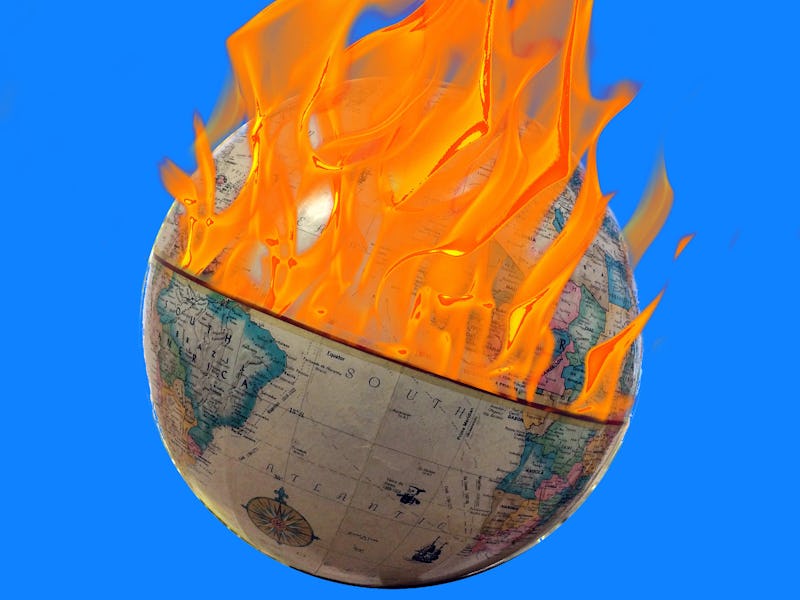Revised Climate Change Predictions Are Slightly Less Apocalyptic
But at a minimum, things are certain to get worse.

Spoiler alert: 2017 was the second hottest year on Earth ever recorded, bested only by the heat boasted by 2016. Climate change is real and ongoing, and things are only going to get worse and worse. The problem, however, is determining how bad things will get. Which is why a new study published Wednesday in Nature provides some much needed clarity and what we should expect — as well as a bit of hope that the world awaits a slightly softer version of devastation than we might think.
The world’s climate experts, including the countries that have signed the Paris Accord, want to keep global temperatures from crossing a 2 degree Celsius rise past pre-industrial levels, arguing that the planet risks catastrophe should it go beyond that. But tracking whether we’re actually going to cross that threshold is insanely difficult, given how many factors influence climate and adjacent natural systems.
The new study, conducted by UK scientists at the University of Exeter and the Center for Ecology and Hydrology, found a way to minimize the uncertainty prevalent in those calculations by around 60 percent. They shrink the range of potential warming from 1.5 and 4.5 degrees Celsius, to between 2.2 and 3.4 degrees Celsius. That value can still have a tremendous negative impact on our planet moving forward, but it does suggest our disastrous journey toward a warmer Earth is perhaps not as disastrous and we initially thought.
The new range is thanks to a revised method of assessing climate change, called equilibrium climate sensitivity. As Wired reports, it’s basically a prediction of global warming that assumes the amount of atmospheric carbon dioxide doubles, and “let[s] the atmosphere and climate come to equilibrium with the carbon dioxide,” lead author Peter Cox, a climate scientist at the University of Exeter, tells Wired.
This is because Cox and his colleagues jettison the climate change trends that have already manifested. They argue that we don’t know exactly how much extra heat has been added by humans — because of the addition of other sorts of climate change influencers. Sulfur dioxide, for example, is a byproduct of fossil fuel-during power plants, and it actually works as a coolant in the atmosphere since it bounces the sun’s energy back out into space.
Without the constraint of so much prior trend data, the new model means that the most optimistic warming we can hope for is 2.2. degrees Celsius. That’s still not good at all (and certainly higher than the 1.5 degrees Celsius initial estimates have pegged), but it does lower the maximum bound from 4.5 degrees Celsius, to just 3.4 — which means less havoc in the form of droughts, increased sea level rise, and loss of wetlands.
Overall, however, the goal to keep global warming below 2 degrees Celsius remains the same. The problem is, that’s a pretty unrealistic goal — and the new range formulated by this new paper agrees. But maybe that’s a good thing. Not only does the new paper give us a less severe prediction for how bad things might get, it also gives us a more realistic understanding of what things will be like even under the best conditions. That’s a down-to-earth perspective we could actually use for, well, Earth’s future.
If you liked this article, check out this video where Bill Nye predicts the future!